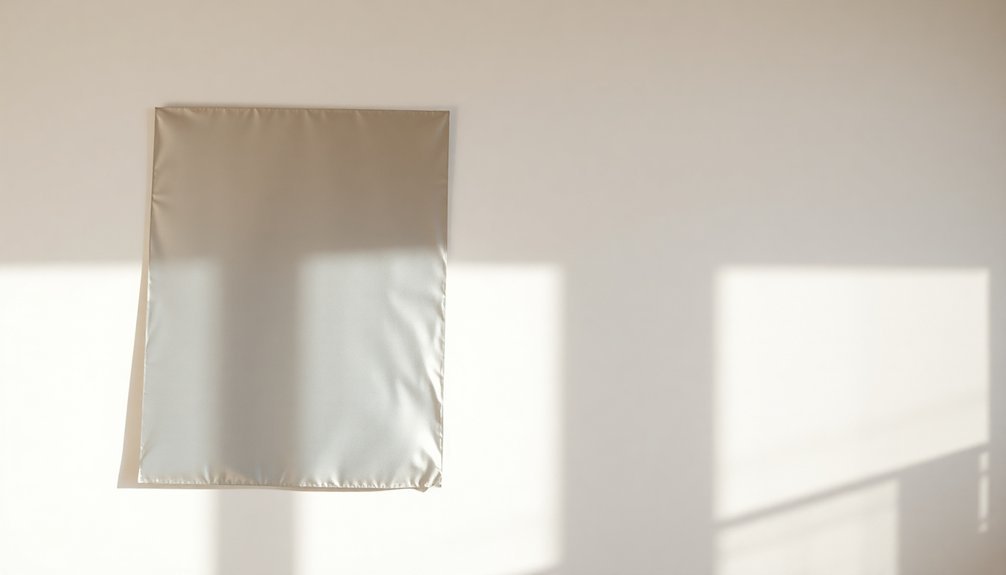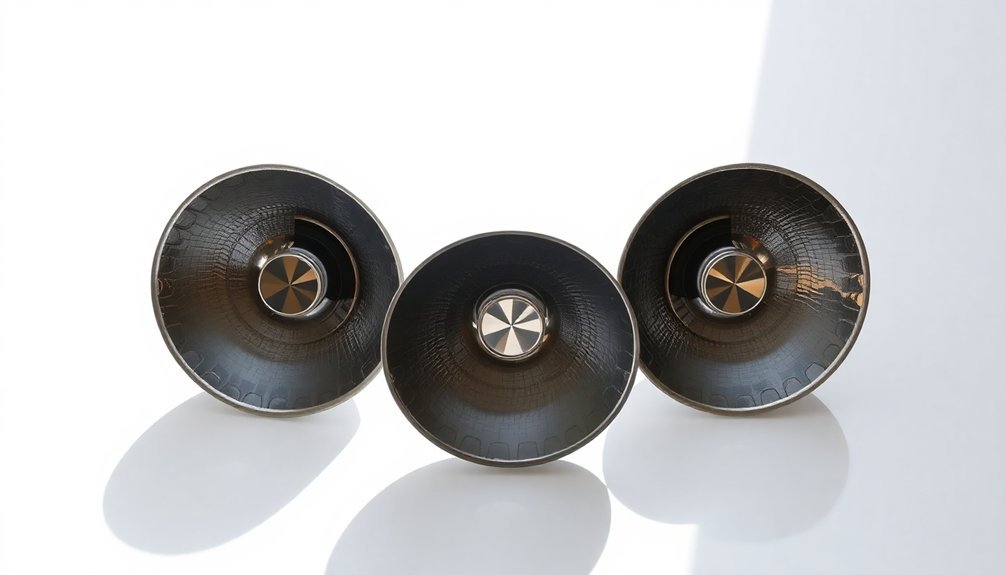Position your reflectors strategically to maximize heat capture in three key ways. First, match the reflector tilt angle with the sun's altitude, targeting around 15.5° in most regions. Second, keep reflectors within 22.5° from perpendicular to your glass surface, with top reflectors angled steeper than bottom ones for ideal performance. Third, maintain proper spacing between reflective materials, using an eyeballing method to adjust until your target surface reflects back clearly. Fine-tuning these positions throughout your cooking process can boost heat collection by up to 85%, and there's even more to discover about maximizing your setup's efficiency.
Setting Up For Maximum Sun

The key to maximizing solar reflection lies in precise positioning and regular adjustments of your reflectors. You'll need to match your reflector's tilt angle with the sun's altitude, with 15.5° being ideal in many regions to prevent unwanted shading.
Set up both top and bottom reflectors at different angles – keep the top one steeper than the bottom. Remember that angle of reflection equals angle of incidence when positioning your reflectors. You can use the eyeballing method by pretending your eye is the sun and adjusting until you see the target surface reflected back.
For precise measurements, use a protractor to confirm your angles. Don't forget to account for seasonal changes in the sun's declination.
Place bright objects in your target area to help you fine-tune the positioning and check if your reflections are hitting the right spot.
Optimal Angles During Cooking
While cooking with solar reflectors, maintaining ideal angles becomes essential for consistent heat distribution.
You'll want to keep your reflectors no more than 22.5 degrees from perpendicular to the glass, with taller reflectors positioned at 20 degrees for peak performance.
You can adjust your reflectors throughout the cooking process as the sun moves. For low sun positions, set your top reflectors at steeper angles and bottom reflectors more shallowly.
To quickly check if you've positioned them correctly, use the eyeballing method – pretend your eye is the sun and adjust until you see the target surface reflected back.
Place a bright object in your cooking area to help with alignment. This simple technique works effectively for both parabolic and box-style solar cookers. A 60-degree angle from the face of the box provides optimal heat reflection in most designs.
Reflector Material And Distance Adjustments

Beyond positioning your reflectors at ideal angles, selecting the right materials and adjusting their distances can dramatically boost heating efficiency.
You'll want to choose materials with high reflectivity like aluminum foil (90-95%) or metal-coated polymers (97%) for peak heat reflection. Gold-coated polyimide films offer the best performance with 99% IR reflectivity.
Create an air space between your reflective surface and the heat source to establish a thermal barrier. The adjacent air space helps minimize conductive heat transfer while maintaining stable temperatures.
When installing multiple layers, maintain proper spacing between reflective materials for enhanced performance.
You can maximize efficiency by combining reflective materials with other insulation types.
For specialized applications, consider temperature requirements – silica fabrics can withstand 1000°C, while metalized polyimide films work best between -269°C and +400°C.
Frequently Asked Questions
How Do Weather Conditions Affect Reflector Performance in Managing Heat Distribution?
You'll notice your reflectors perform poorly in rain and snow, which block reflection. Extreme temperatures can damage materials, while wind disrupts positioning. These conditions greatly reduce heat distribution efficiency.
Can Reflectors Be Stacked or Layered to Increase Heat Concentration?
You shouldn't stack reflectors, as it won't improve heat concentration. Instead, focus on using a single, well-designed reflector. Multiple layers can create inefficiencies and actually reduce the overall heating effectiveness.
What Safety Measures Should Be Taken When Handling Hot Reflector Surfaces?
You'll need to wear protective gloves, use isolation equipment, and guarantee proper ventilation. Don't touch hot surfaces directly, maintain distance from reflectors, and allow equipment to cool before storage.
How Often Should Reflectors Be Cleaned for Optimal Heat Management?
You'll need to clean your reflectors every 3-4 months in normal conditions, but increase frequency to monthly in dusty or polluted areas. Regular cleaning prevents heat-reducing buildup and maintains maximum performance.
Do Different Colored Surfaces Around Reflectors Impact Their Heat Reflection Efficiency?
Yes, surrounding colors affect your reflector's efficiency. You'll get better heat reflection with white surfaces nearby, while darker colors absorb more heat. Metallic surroundings can help scatter and enhance reflection capabilities.
In Summary
You'll get the best results from your solar reflector setup by regularly adjusting the angles to track the sun, maintaining 45-60 degree positions during peak cooking times, and keeping your reflective materials clean and properly spaced. By following these positioning guidelines and making small adjustments throughout the day, you'll maximize heat concentration and improve your solar cooking efficiency considerably.





Leave a Reply